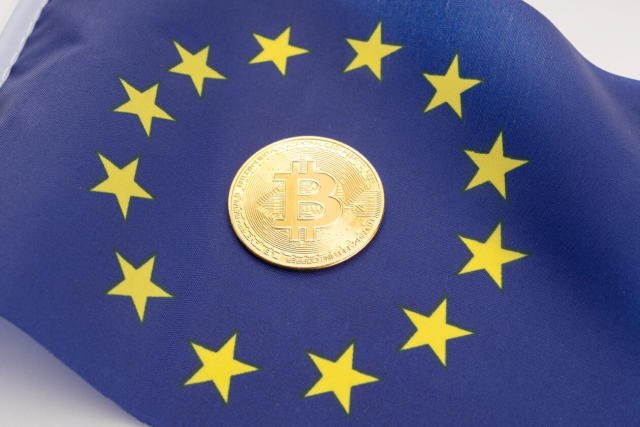Coinbase Targets $3 Trillion Stablecoin Market in New Credit Pact
What is MICA? | Europe’s Controversial Framework for Crypto Regulation
(Originally posted on : Crypto News – iGaming.org )
A new regulatory landscape is soon to take shape in Europe, transforming the face of cryptocurrency trading and services with the implementation of the Markets in Crypto Assets (MiCA) regulations. Designed to offer a comprehensive framework for cryptocurrencies as financial services, MiCA extends to all forms of digital assets, making no distinction among different cryptocurrencies.
MiCA promises to standardize registration and anti-money laundering protocols for crypto asset service providers (CASPs) throughout Europe, thereby enabling the pan-European operation of licenses. This proposed regulation reflects an effort similar to what the UK has initiated with its own regulatory rules.
New players only. Exclusive Welcome Bonus – 350% bonus on your first deposit up to 5BTC
CASPs will find themselves regulated not by the assets they deal in, but by the services they offer. The nature of the services, whether it’s trading platforms, custody, or advice, will dictate the specific requirements and risk mitigation strategies they’ll need to adhere to.
Interestingly, MiCA will implement different requirements depending on the size of service providers. Larger players will face more stringent controls concerning capital and governance, all aimed at bolstering consumer protection. The future may see distinct guidelines for the marketing and handling of stablecoins and NFTs, as these digital assets continue to evolve.
Europe’s embrace of cryptocurrencies, illustrated by the upcoming MiCA regulation, is attracting attention from businesses in the industry. The region might soon see a rise in innovative startups and new services, keen to take advantage of the favorable regulations.
New players only. Exclusive Welcome Bonus – 350% bonus on your first deposit up to 5BTC
On a global level, MiCA’s influence may extend beyond Europe’s borders, with other regions possibly integrating elements of MiCA into their own regulatory frameworks. However, growth in the industry will also depend on the expansion of the talent pool.
For everyday crypto users, MiCA underscores the need for them to understand that crypto firms will be treated as financial service providers. The ability to operate licenses across Europe is a significant change that promises to broaden the reach of crypto services.
With MiCA expected to become law by the end of next year, it means a new chapter for the crypto industry, marked by uniformity, consumer protection, and potential global repercussions.
While the incoming MiCA regulation might streamline the crypto landscape in Europe, concerns persist. The all-encompassing nature of the framework and its service-oriented focus could lead to unanticipated hurdles and risk oversight. Heavier regulations for large service providers might also stunt the growth of smaller, innovative startups. Moreover, with MiCA being Europe-centric, it could result in regulatory inconsistencies globally. Importantly, the regulatory push under MiCA could also pose threats to privacy and financial freedom of European citizens, raising questions about potential overregulation. This makes it uncertain whether MiCA is truly the effective, comprehensive answer to the crypto industry’s regulatory needs.







 Bitcoin
Bitcoin  Ethereum
Ethereum  Tether
Tether  XRP
XRP  Wrapped SOL
Wrapped SOL  USDC
USDC  Lido Staked Ether
Lido Staked Ether  Dogecoin
Dogecoin  TRON
TRON  Cardano
Cardano  Wrapped stETH
Wrapped stETH  Wrapped Bitcoin
Wrapped Bitcoin  Figure Heloc
Figure Heloc  Hyperliquid
Hyperliquid  Chainlink
Chainlink  Bitcoin Cash
Bitcoin Cash  Wrapped eETH
Wrapped eETH  Stellar
Stellar  Ethena USDe
Ethena USDe  USDS
USDS  Sui
Sui  Binance Bridged USDT (BNB Smart Chain)
Binance Bridged USDT (BNB Smart Chain)  WETH
WETH  LEO Token
LEO Token  Hedera
Hedera  Avalanche
Avalanche  Coinbase Wrapped BTC
Coinbase Wrapped BTC  Litecoin
Litecoin  USDT0
USDT0  Monero
Monero  WhiteBIT Coin
WhiteBIT Coin  Shiba Inu
Shiba Inu  Toncoin
Toncoin  Cronos
Cronos  Mantle
Mantle  Zcash
Zcash  Ethena Staked USDe
Ethena Staked USDe  Dai
Dai  Polkadot
Polkadot  Bittensor
Bittensor  MemeCore
MemeCore  Uniswap
Uniswap  World Liberty Financial
World Liberty Financial  Aave
Aave  sUSDS
sUSDS  OKB
OKB  Ethena
Ethena  Bitget Token
Bitget Token  USD1
USD1  Pepe
Pepe  NEAR Protocol
NEAR Protocol  BlackRock USD Institutional Digital Liquidity Fund
BlackRock USD Institutional Digital Liquidity Fund  PayPal USD
PayPal USD  Jito Staked SOL
Jito Staked SOL  Ethereum Classic
Ethereum Classic  Binance-Peg WETH
Binance-Peg WETH  Aptos
Aptos  Ondo
Ondo  Jupiter Perpetuals Liquidity Provider Token
Jupiter Perpetuals Liquidity Provider Token  Aster
Aster  Falcon USD
Falcon USD  Pi Network
Pi Network  POL (ex-MATIC)
POL (ex-MATIC)  Tether Gold
Tether Gold  Worldcoin
Worldcoin  USDtb
USDtb  Rocket Pool ETH
Rocket Pool ETH  Gate
Gate  Arbitrum
Arbitrum  KuCoin
KuCoin  HTX DAO
HTX DAO  Binance Staked SOL
Binance Staked SOL  Kinetiq Staked HYPE
Kinetiq Staked HYPE  Internet Computer
Internet Computer  Pump.fun
Pump.fun  Algorand
Algorand  Story
Story  StakeWise Staked ETH
StakeWise Staked ETH  Cosmos Hub
Cosmos Hub  VeChain
VeChain  Liquid Staked ETH
Liquid Staked ETH  Official Trump
Official Trump  Wrapped BNB
Wrapped BNB  Sky
Sky  Jupiter
Jupiter  Lombard Staked BTC
Lombard Staked BTC  Syrup USDC
Syrup USDC  BFUSD
BFUSD  PAX Gold
PAX Gold  Pudgy Penguins
Pudgy Penguins  syrupUSDT
syrupUSDT  Renzo Restaked ETH
Renzo Restaked ETH  Render
Render  Sei
Sei